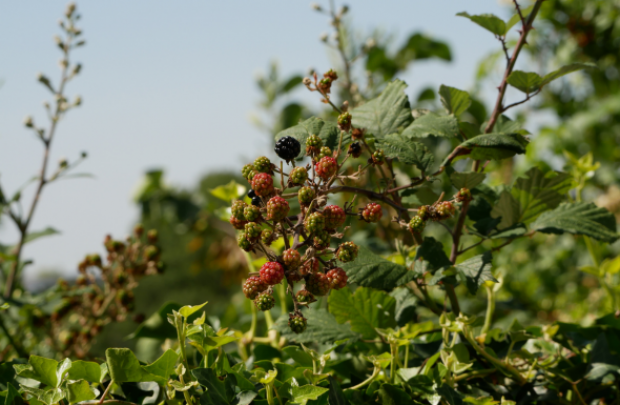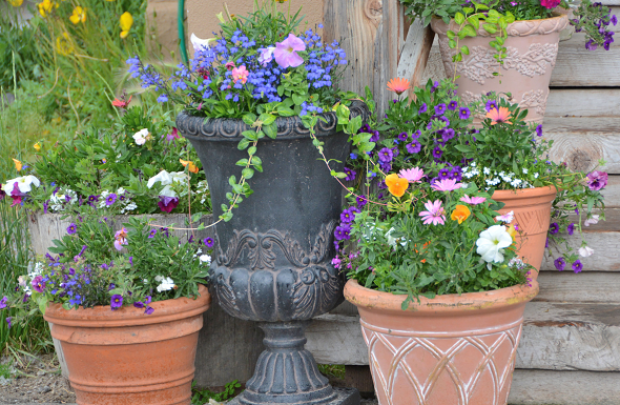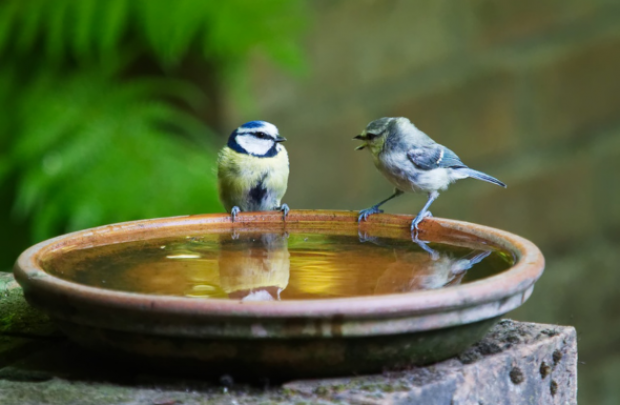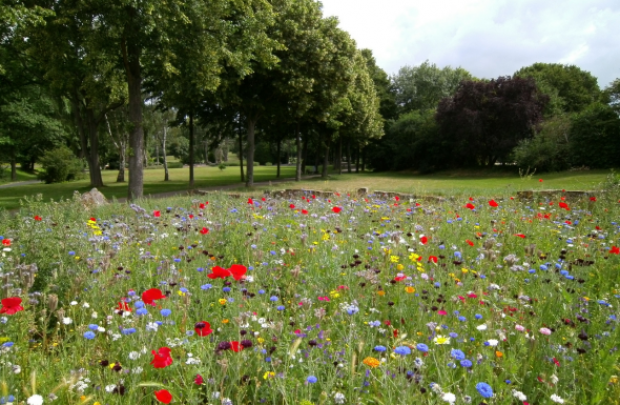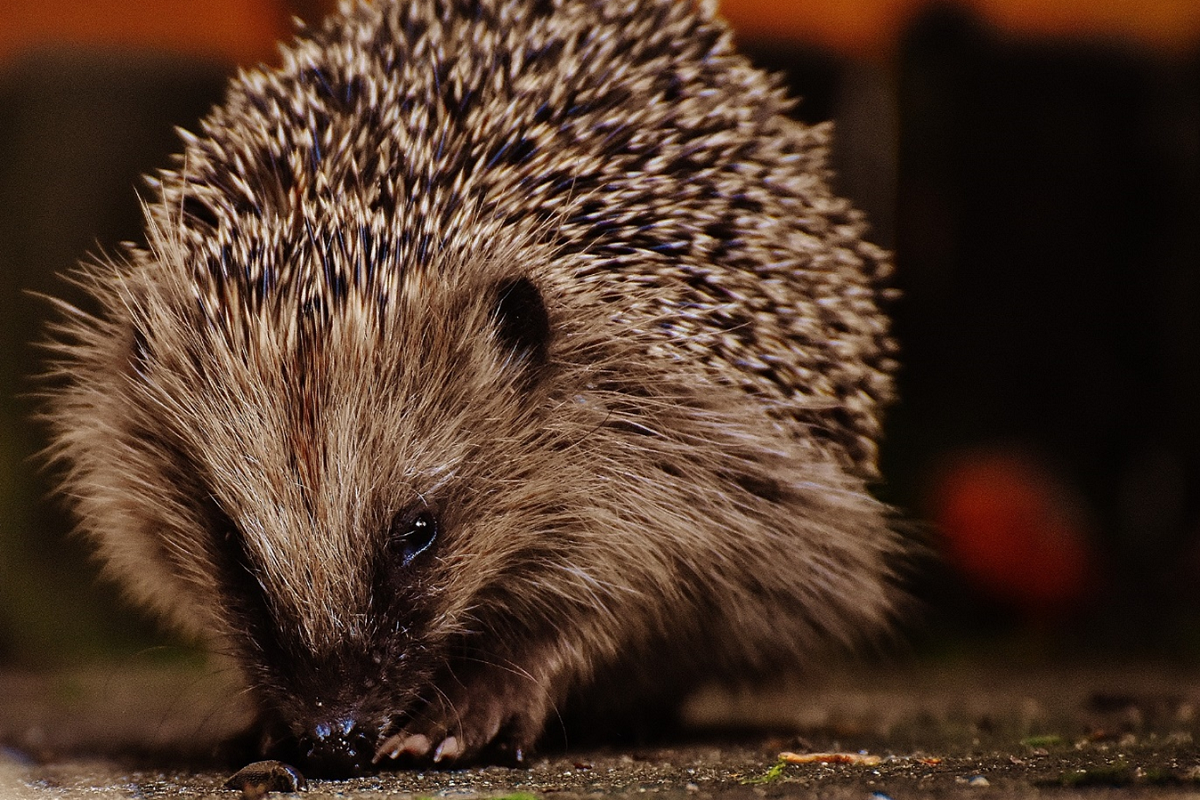
We heart hedgehogs! ❤️🦔
By Amber Jepson, Zoology, Bangor University
It is that time of year...finally! The long winter nights and harsh weather is starting to dissipate and make way for the fresh start that spring offers. Alongside the waking spring season, some species have started to wake from their winter hibernation, ready to embrace springtime. The humble European hedgehog (Erinaceous europaeus), Britain's only spiny mammal species, is but one example of a true hibernator (being able to drop their internal temperature to match that of their environment and enter a state of lethargy and deep sleep).
This blog celebrates one of our favourite nocturnal friends – Boost your understanding of their importance and decline, plus find out what we can do to help save them and make your garden a hedgehog haven.
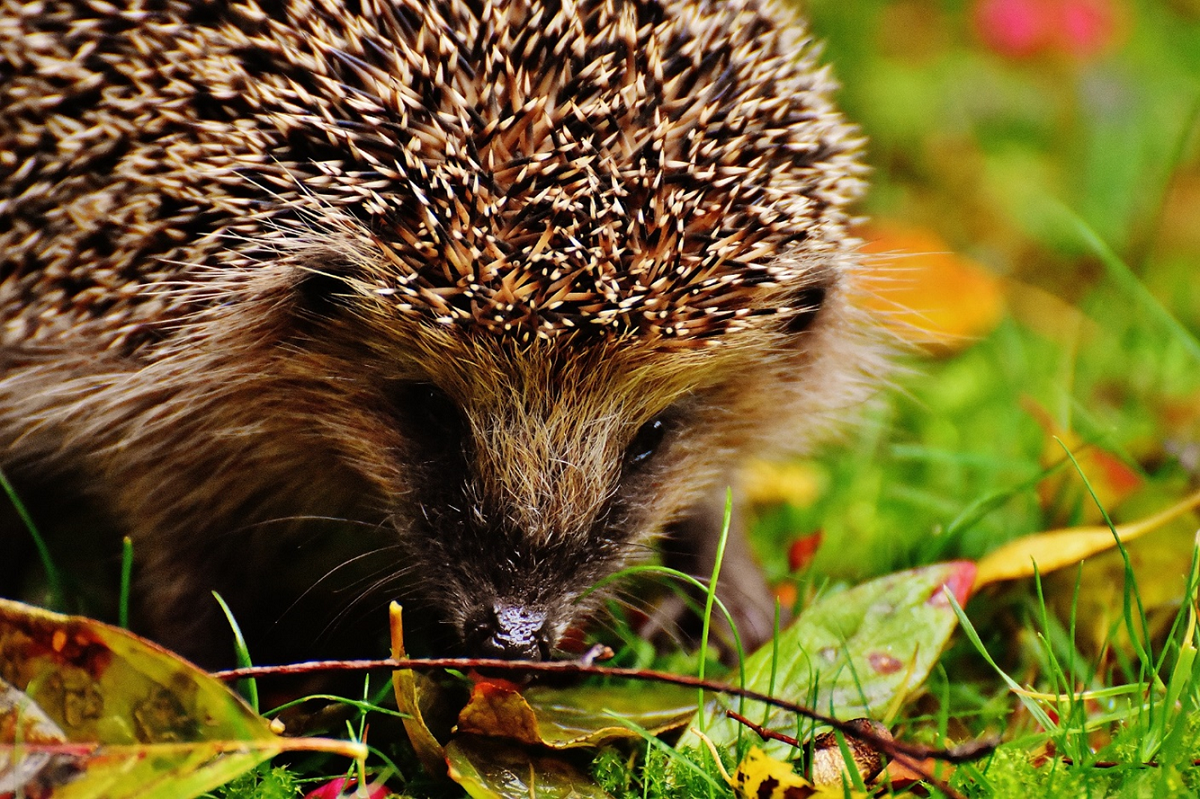
The thing about hedgehogs...
Hedgehogs are one of the most well recognised and loved species in the UK. Unique in their spiny appearance, they are hard to mistake for anything else. These prickly insectivores are one of Britain’s many indigenous mammal species and are renowned for their nocturnal lifestyle and allusive nature. You have the best chance of spotting them between April and October. Sadly, hedgehogs are one of the more threatened mammal species in the UK. Hedgehog populations across Britain are decreasing at an alarming rate, due to habitat destruction and loss of food sources - so much so that they are now classified as ‘vulnerable to extinction’ on Great Britain's Red List for mammals.
Having fewer hedgehogs in our landscape is a real loss for Britain, not only because of their charismatic and enjoyable presence, but also because of their role in the ecosystem: Hedgehogs have a key role in maintaining a healthy ecosystems, as they work to control insect populations – including keeping gardens healthy.
There are many causes for hedgehog decline, beginning with humanity’s carelessness of the environment. Changes need to be made to help make our gardens and urbanised areas safer for our prickly friends. Our gardens are still one of the major strongholds for Britain's hedgehogs, as hedgehogs thrive off utilising the hedgerows, bushes, and garden foliage. They also make the most of the feeding stations provided by flowering plants, garden vegetation and flower beds, where they enjoy fruitful bounties of juicy minibeasts (favourites include worms, beetles, slugs, caterpillars, earwigs and millipedes). It is ideal for all to engage in making their gardens more hedgehog friendly spaces, to support the declining hedgehog populations and enable their survival alongside continuing urbanisation.
The plight of plastic
By now we are all aware of the plight that is plastic pollution and litter, whether from documentaries, or in person. Litter causes a significant problem for hedgehogs, with scenarios of hedgehog mortality ranging from ingesting stray pieces of litter and choking, or getting tangled in the rings from 6-pack cans, polystyrene cups, netting, plastic bags or elastic bands. These items often cause serious damage, and can even result in hedgehog deaths.
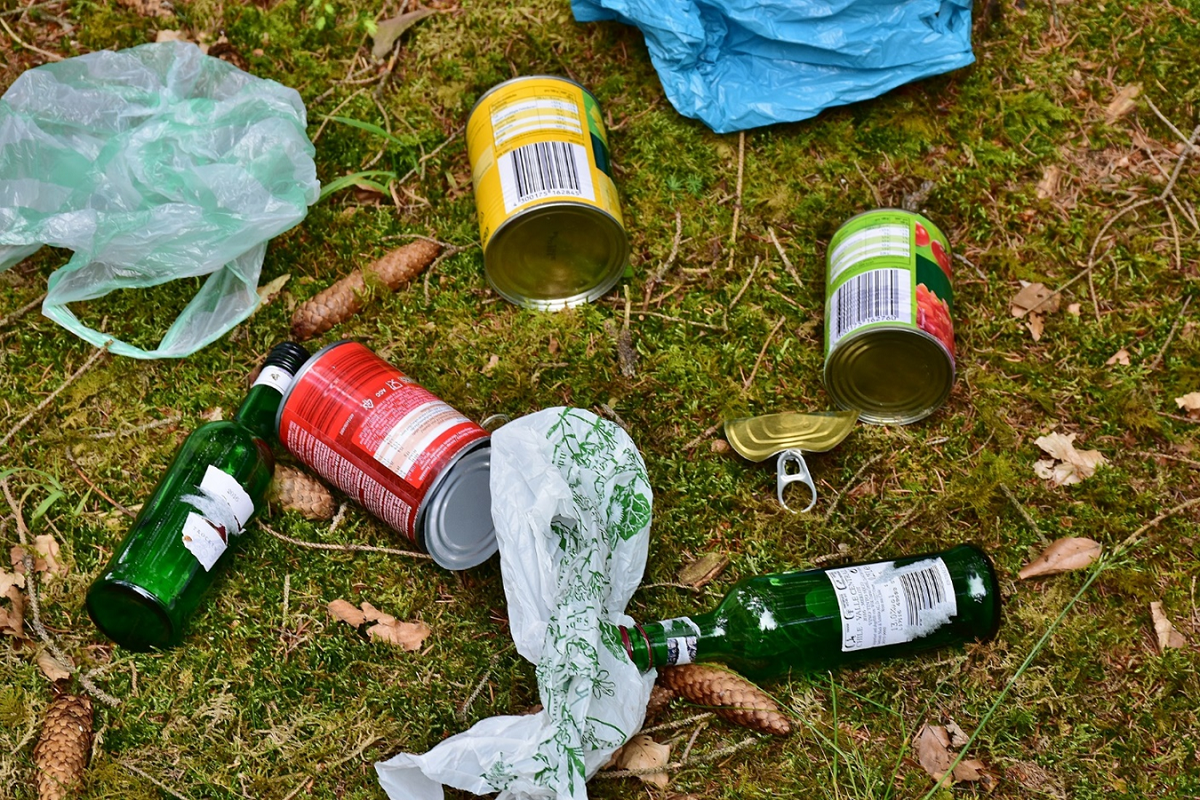
Sadly, litter – plastic in particular – can be found everywhere. Hedgerows are a common place for rubbish to end up, either being blown in by the wind, or thrown by careless passers-by, and this subsequently makes hedgehogs more susceptible towards coming into contact with it, as hedgerows are a key hedgehog habitat. It is important to be more mindful of the environment, putting rubbish where it belongs – in the bin – and recycling where possible.
One of the best ways to reduce the amount of litter in the environment is to get involved in litter picking. This helps to counteract the waste strewn about by litterbugs and supports making ecosystems healthy again. You don’t even need to litter pick in organised groups, you can do it of your own accord, even just picking up rouge bits and pieces and putting them in the bin. Be prepared when you go out on walks, bringing a bin bag and gardening gloves, or a litter picker, and pick litter as you go. Remember to stay safe and avoid sharp objects, human waste (such as nappies) and other dangerous items – including electricals and paint. Report these items of litter to your local council or landowner. Finally make sure to wash your hands after disposing of the waste.
Protect hedgehogs from garden strimmers
Strimming poses a prominent danger to hedgehogs. Our spikey friends love to hide in dense vegetation, under leaf foliage and within hedgerows, so it is always important to use garden equipment, such as garden strimmers, with caution or not at all. It is particularly important to avoid using strimmer’s near areas that hedgehogs are more likely to inhabit, such as hedgerows, bushes and dense vegetation.
Instead of ‘fight or flight’ the response of hedgehogs to disturbance is to curl up into a ball, so that their spines are protecting their vulnerable belly. This means that even though strimmers are loud hedgehogs won’t run out their way. You may not see a hedgehog hiding in the foliage or bushes and could accidentally harm, or even kill them. So if you do use a strimmer, make sure to check all areas carefully beforehand, especially around bushes, hedgerows and tall grass, as these areas are usual resting sites for hedgehogs.
Beware of bonfires
Bonfires in gardens, public spaces and even at public events can all pose a threat to hedgehogs. Often at public events the team managing the bonfire will take steps to help protect hedgehogs from any unintentional harm, but with public events scaled back due to Covid restrictions, many people have turned to making their own bonfires in their gardens, which can (if steps to be careful aren’t taken) seriously affect the wildlife that lives there.
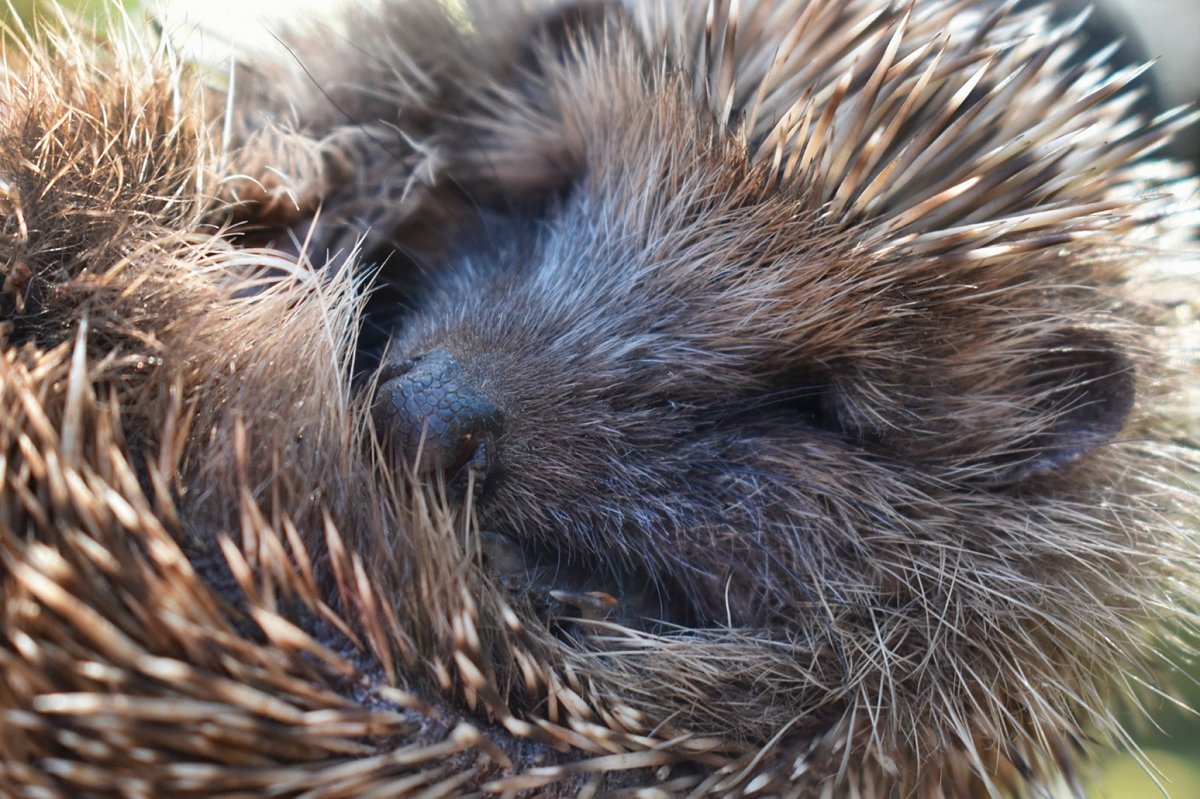
Hedgehogs love to hide in log/stick piles, as it offers them shelter from the elements and from predators. The large piles of logs and sticks that are made to create bonfires so hedgehogs may decide to hide in the bonfire-to-be without anyone realising. When the fire is lit, unsuspecting hedgehogs may still be hiding in the log pile and unintentionally harmed as a result.
To have a wildlife friendly bonfire:
- Always make sure to check the log pile that you have made prior to lighting them.
- If it is possible, build your bonfire the day you intend to use it, as the longer it is left the higher the risk there will be a hedgehog residing in the logs.
- If you have to build the bonfire prior to the day you use it, you could surround it with metre-high chicken wire, to prevent hedgehog access.
- Remember to always build your bonfire on open ground, as hedgehogs often shelter in shrubbery, and you don’t want all that smoke too close to them.
- Always light the bonfire from one of its corners, rather than in the centre. This gives other wildlife a route out, and a chance to escape the bonfire.
Other tips to help hedgehogs
Here are a few pointers that may encourage hedgehogs to visit:
- It can be difficult for hedgehogs to access gardens with large fencing and gates, so create a gap in your borders. This is crucial in enabling hedgehogs easy access to gardens, and sometimes creates a network of natural spaces that can link across wide areas.
- Create and install a wooden nesting boxes and keep small corners packed with dense vegetation and brash - maybe even add a new log piles - to allow hedgehogs sheltered spaces to hide comfortably and forage for their favourite foods. It is also important to leave sections of your garden wild and overgrown, to enable further opportunities for shelter, food and potential nesting sites.
- If you have a pond built into your garden, then fantastic! Not only does your garden pond offer refuge for freshwater and sub-aquatic animal species, but it also provides a water source for hedgehogs to use at any time – though ensure you provide an efficient hedgehog escape route, so hedgehogs can freely come in and out of your pond. Hedgehogs are amazing swimmers, but can get into serious trouble if they are not able to escape from the pond after taking a dip.
- It is also important to cover any open drains and holes in or around your garden, as hedgehogs have poor eyesight so are vulnerable to these hazards.
❤️ your hedgehogs!
By getting involved with projects, like Naturehood, and doing your bit in your own space, you can contribute to conservation efforts to support hedgehogs all around in the UK. For more information on how you can help and get involved, take a look at the previous blog ‘Spring Into Action for Hedgehogs’. Happy Hedgehog Awareness Week, everyone!
